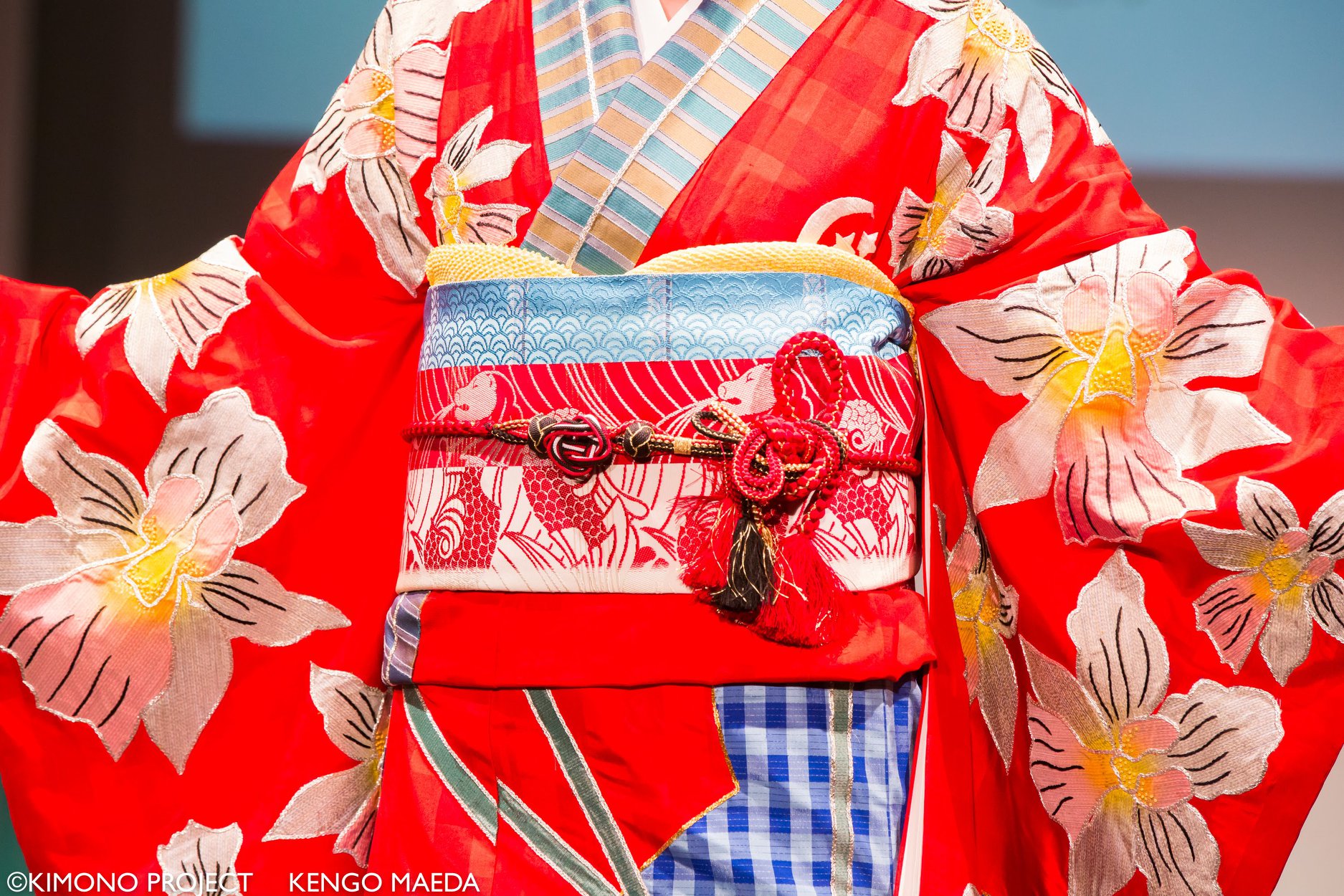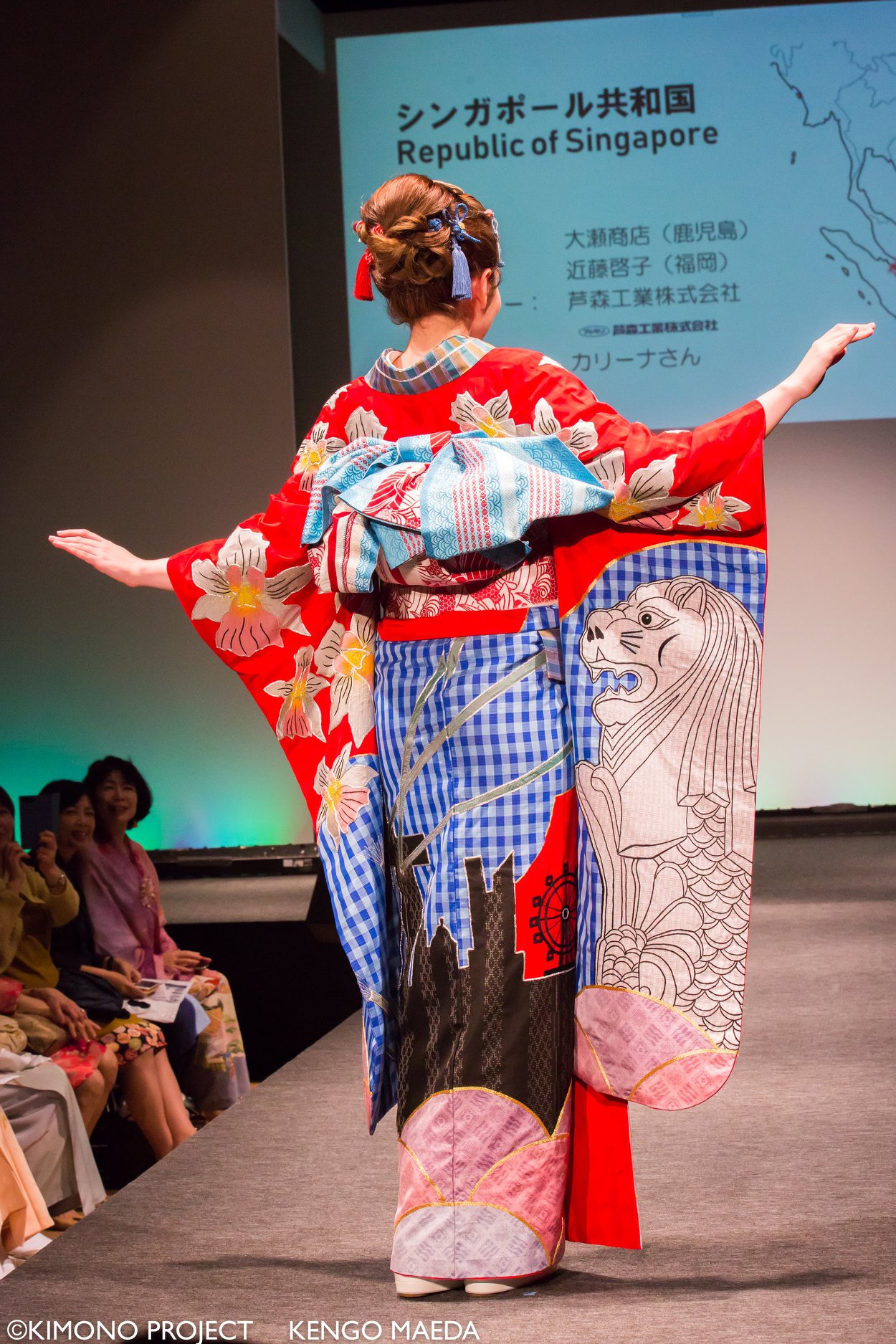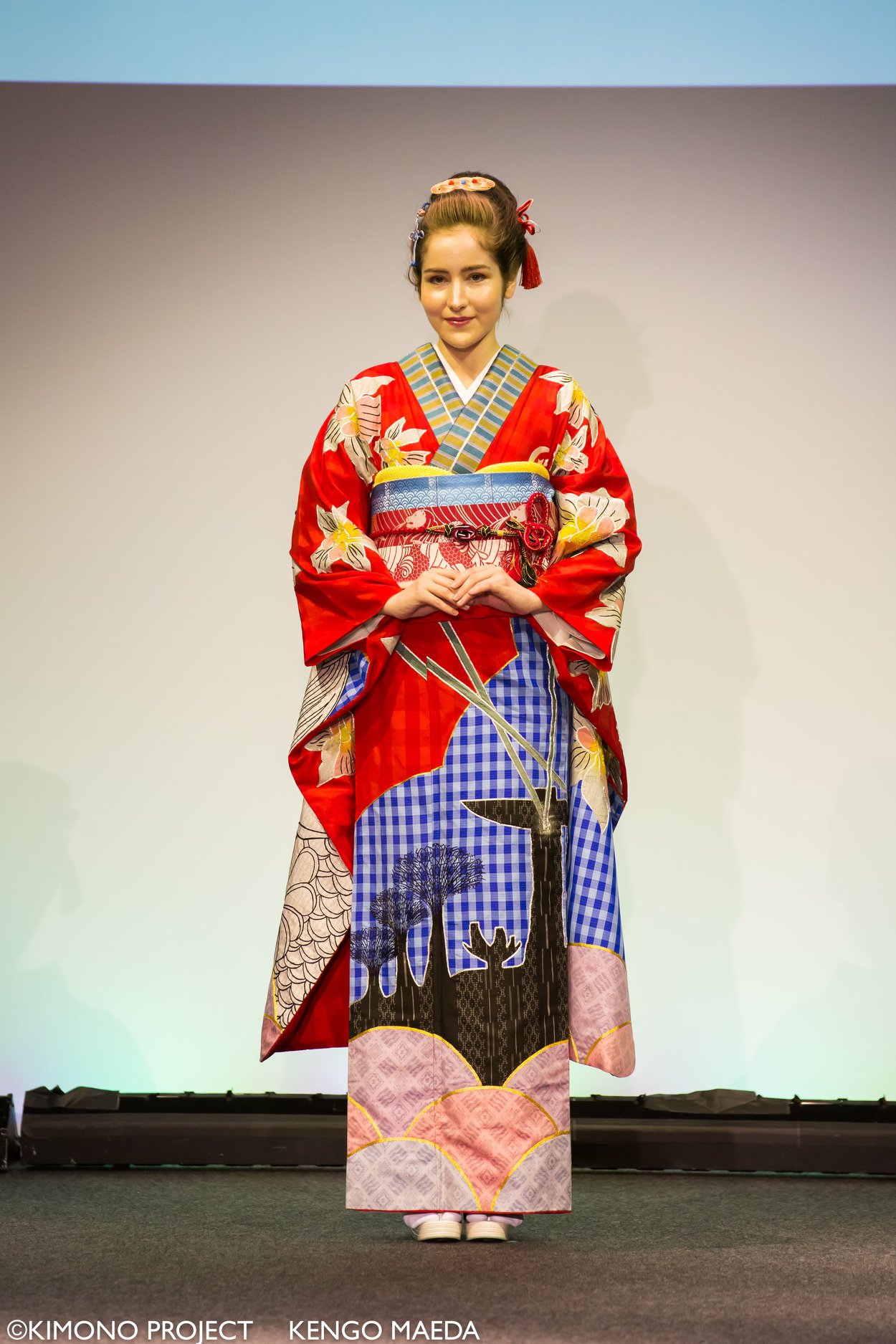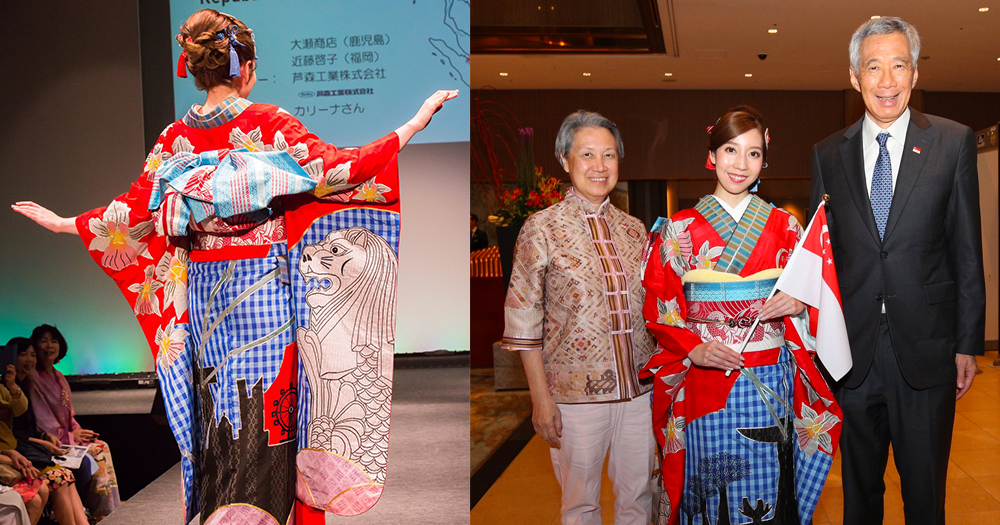Prime Minister Lee Hsien Loong is in Osaka, Japan for the G20 summit.
And like the excellent hosts they are, the Japanese added a little something extra to make their Singaporean guests feel more welcome.
Singapore-inspired kimono
While there, PM Lee and his wife Ho Ching were welcomed by Yui Yamada, a Japanese woman who was dressed in a Singaporean-inspired kimono.
In case you can't see it:[caption id="" align="alignnone" width="640"] Top image via Lee Hsien Loong's Facebook page[/caption]
Top image via Lee Hsien Loong's Facebook page[/caption]
[caption id="" align="alignnone" width="1200"] Top image via Lee Hsien Loong's Facebook page[/caption]
Top image via Lee Hsien Loong's Facebook page[/caption]
Part of massive global kimono project
The Singapore-themed kimono is part of the Imagine One World Kimono Project, which began in 2014.
It is promoted by non-governmental and non-profit organisation Imagine One World Incorporated.
The project aims to create 206 kimonos representing the different countries around the world by 2020, the same year when the Olympics will be held in Japan.
Their mission is "to send a message of mutual respect and unity", according to their English Facebook page.
At the same time, the project hopes to invite renewed interest in the craftsmanship behind the dying trade; the techniques employed are in danger of being lost forever as ageing kimono craftsmen pass on due to old age, Soranews24 noted.
Made in Kagoshima and Kyoto
The design came from art students in Matsuyo High School, Kagoshima, and was made by kimono store Ose Shoten.
The obi belt, made of special Hakataori fabric, was created by Fukuoka-based obi artist Keiko Kondo.
 Photo via キモノプロジェクト「イマジン・ワンワールド」's Facebook album
Photo via キモノプロジェクト「イマジン・ワンワールド」's Facebook album
Signs of Singapore
The kimono contains many uniquely Singaporean motifs, such as the Merlion, the national flower Vanda Miss Joaquim, and landmarks like Gardens by the Bay, Marina Bay Sands, the ArtScience Museum and the Singapore Flyer.
Japanese people living in Singapore provided information about the country to the students.
Embroidery on the kimono was made in Kyoto, and a combination of Oshima Tsumugi fabrics was also used.
Such fabric is considered highly valuable and sought after, as the threads are dyed in the mud using a technique unique to the Amami Islands in the Kagoshima prefecture.
 Photo via キモノプロジェクト「イマジン・ワンワールド」's Facebook album
Photo via キモノプロジェクト「イマジン・ワンワールド」's Facebook album
 Photo via キモノプロジェクト「イマジン・ワンワールド」's Facebook album
Photo via キモノプロジェクト「イマジン・ワンワールド」's Facebook album
Awesome.
Top image via Lee Hsien Loong's Facebook page and キモノプロジェクト「イマジン・ワンワールド」's Facebook album.
If you like what you read, follow us on Facebook, Instagram, Twitter and Telegram to get the latest updates.
